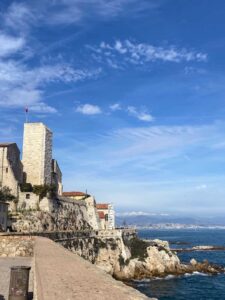How this Darjeeling-based coder is aiming to retire early with a ₹15-cr corpus
5 min readHis early investments, however, lacked direction and focus, Mishra admits. To get some feedback, he anonymously posted his portfolio on Reddit, a community-based platform. A fellow user pointed out that his portfolio was overcrowded with too many mutual funds, prompting Mishra to rethink his investment strategy. At the time, Mishra had 14-15 mutual fund schemes in his portfolio.
Realising he needed professional guidance, Mishra began searching for financial advisers. He discovered a list of advisers on the website of an association of registered investment advisers, and chose Bengaluru-based Akshay Nayak.
Rejigging the portfolio
Nayak observed that Mishra’s mutual fund investments were scattered across several funds. “As he is fairly new to equity investing, I advised him to streamline his portfolio to just a simple Nifty 50 Index fund for now. His existing investments can be moved to the index fund, and fresh investments can also be made in the index fund, but(with a) separate folio to demarcate it,” he said.
Mishra can be gradually exposed to other market segments through index funds such as Nifty Next 50 or even mid-cap index funds as he gains more experience, and if his goals and risk tolerance allow it, Nayak said.
Mishra had also mistakenly bought all his mutual fund schemes under regular plans, as the fintech platform he was using didn’t clearly mention that it was operating under a mutual fund distributor licence and hence these were regular plans, and charged distributor commissions.

View Full Image
Recognising the potential job instability in the IT sector, Nayak also recommended that Mishra establish a contingency fund.
Mishra had already experienced the instability of the IT sector during a previous internship. “I was on a six-month contract with an organization and expected it to be renewed, but suddenly I was informed that it wouldn’t be renewed this time,” he recalled. He now plans to build a contingency fund holding 6-12 months of expenses.
Mishra had started investing in a National Pension Scheme (NPS) as his current employer—a foreign startup—didn’t offer any Employee Provident Fund (EPF). Nayak asked Mishra to switch from NPS to the Public Provident Fund (PPF).
Also read | Slow and steady: How a passive approach secured this CEO’s retirement future
“Harsh, like quite a few of my clients, aims for financial independence by 50-55,” Nayak said. “However, with NPS, if one decides to exit completely before 60, at least 80% of the accumulated corpus must be used to purchase an annuity, while the remaining 20% is paid out as a lumpsum. Further, the annuity is taxable at the individual’s slab rate.”
Mishra has opted for an NPS-E account—an equity-oriented NPS scheme with 75% equity allocation, unlike pure debt investments such as EPF and PPF.
Asset mix
Mishra’s portfolio has 60% allocation to equities, 15% investment in real estate, 5% in gold, and the remaining 20% in debt.
Of his equity portfolio, 70% is in mutual funds, and 30% in direct equity shares. Within mutual funds, 20% is invested in the index fund category, 14% in small-cap, 11% in equity-linked saving scheme, 18% in mid-cap, 6% in infrastructure fund, 8% in flexicap, 4% in contra fund, and 13% in other equity funds. Then there is also some exposure to hybrid funds.
Mishra said he bought a flat as an investment in Pune last year and expects to get possession of the property sometime next year. He said he opted for Pune as he sees it as a growing market with several opportunities and spotted a good location near an IT park in Pune.
Also read | Are you sharing too much? The risks of giving your ITR credentials to CAs
Mishra decided against taking a home loan to save on interest costs. Instead, he opted for staggered payments to his developer on a quarterly basis.
He plans to rent out the property and expects a 4-6% rental yield.
Mishra said his family has had positive experiences with real estate investing. However, Nayak has advised Mishra to avoid significantly increasing his real estate exposure due to its lack of liquidity.
Financial independence goals
Mishra is targeting a ₹15 crore-corpus to achieve financial independence by age 50-55. He loves reading and writing, and plans to pursue fiction writing in his 50s. He may not necessarily fully retire or stop working, but would like to have the freedom to pursue his passions.
Mishra plans to get married in 4-5 years, and said he has some older investments that should help him with his wedding costs.
Also read | Paying high taxes? Save up to 16% by paying with these credit cards
Mishra also likes to travel frequently. He said he travels every 2-3 months and takes solo trips. “The costs are not much as I am usually travelling solo and within India.”
Living in Darjeeling costs Mishra ₹15,000- ₹20,000 per month, which allows him to maintain a high savings rate of 65% and invest towards his financial goals.
Quitting F&O
Mishra earlier tried his hand with trading in futures and options (F&O). Given his expertise at coding, he said he could run codes to automate trading and make money from it. But he soon realised it was not easy and after some nominal losses, he quit F&O trading for good. “I also felt it was getting a bit addictive,” he recalls.
Mishra also prefers to avoid direct stock investing. “It requires a lot of research, and even with the best research, it may not be enough for a retail investor to always pick the right stocks. So going forward, I want to let mutual funds take care of my investment research needs,” he said.
Insurance cover
Mishra doesn’t have a life insurance cover but said he would consider it after his wedding or starting a family.
He has a ₹10 lakh as a base healthcare cover, with a ₹10 lakh top-up. Besides this, as his father is in the Border Security Force, he is also covered under BSF’s health cover scheme, for up to ₹5 lakh.
Discover more from Slow Travel News
Subscribe to get the latest posts sent to your email.



